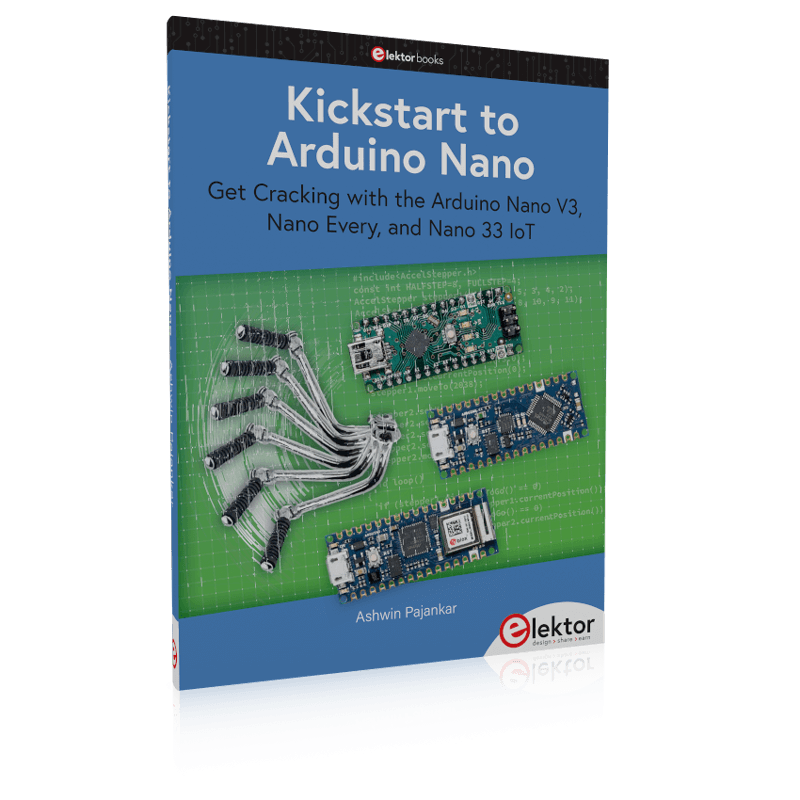Getting Started with Arduino Nano
October 19, 2022
on
on

Arduino is not just an organization or a brand. It is a movement. Just like home computers changed the entire industry of computing in the 70s and 80s, the same impact is made by Arduino in this half of a century. Arduino is an ecosystem of open-source hardware and software led by the organization also named Arduino. Since Arduino is open-source, anyone can make custom boards as per their own requirements and also modify the software for their own usage.
The most popular method of programming all the Arduino boards is the Arduino IDE, an open-source tool designed, developed, and maintained by Arduino. The Arduino IDE (Integrated Development Environment) is a cross-platform application. It is written in the Java programming language. Inspired by the IDE for the languages Processing and Wiring, it supports C and C++ programming languages using special rules of code structuring and special syntax. Arduino uses a tool known as avrdude to convert the C/C++ code written by the end user to hexadecimal code. This hexadecimal code is fed to the microcontroller board for the final execution.
A few boards from the Nano subfamily (namely Arduino Nano RP2040 Connect, Arduino Nano 33 BLE Sense, and Arduino Nano 33 BLE) support MicroPython. MicroPython is a microcontroller-optimized implementation of the Popular Python 3 programming language.
About the Author
Ashwin Pajankar is a self-employed technical author, Youtuber, and instructor. He has published more than two dozen of books on diverse topics in microcontrollers and computer programming for 4 major publishing houses. He teaches to over 80000 students online on a variety of platforms. Currently, he is focusing on his youtube channel where he will teach mathematics to learners of all ages.
What Is Arduino Nano?
The Arduino family has many member boards. Arduino Nano is a sub-family within the Arduino family. As of now, it has six members (three of which are covered in detail in the book the article is based on). All the members have the same physical number of pins. Arduino Nano is the most basic member of the family. Furthermore, Arduino Nano IoT 33 and Arduino Nano RP2040 Connect are the most advanced members of the family and they can be connected to the internet for designing and deploying real-world IoT applications.Arduino Nano Programming
Arduino boards can be programmed in a variety of ways. Depending on the requirement, we can use frameworks ranging from Assembly language programming to Python programming (MicroPython for supported boards only) to deploy real-world applications.The most popular method of programming all the Arduino boards is the Arduino IDE, an open-source tool designed, developed, and maintained by Arduino. The Arduino IDE (Integrated Development Environment) is a cross-platform application. It is written in the Java programming language. Inspired by the IDE for the languages Processing and Wiring, it supports C and C++ programming languages using special rules of code structuring and special syntax. Arduino uses a tool known as avrdude to convert the C/C++ code written by the end user to hexadecimal code. This hexadecimal code is fed to the microcontroller board for the final execution.
A few boards from the Nano subfamily (namely Arduino Nano RP2040 Connect, Arduino Nano 33 BLE Sense, and Arduino Nano 33 BLE) support MicroPython. MicroPython is a microcontroller-optimized implementation of the Popular Python 3 programming language.

Why Are Arduino Boards So Popular?
As mentioned earlier, different Arduino boards are widely employed by academic, research, and industrial organizations. Due to its simplicity, in academics, it is the very first microcontroller board students nowadays come across. Arduino has a dedicated offering of boards for industrial applications. These boards are production ready and are marketed under the brand name Arduino Pro. Arduino boards are routinely employed for industrial control. In the research, robotics and Human-Computer Interaction are the areas where these boards are used very frequently.Final Note
Thus, I encourage all the readers to explore the amazing Arduino Ecosystem to build truly immersive real-life projects. On top of that, the Internet of Things, Robotics, and Industrial Control are very good career avenues for folks who are interested in electronics and programming. Arduino combines the power of high-level programming with microcontroller board providing immense power to the end users.About the Author
Ashwin Pajankar is a self-employed technical author, Youtuber, and instructor. He has published more than two dozen of books on diverse topics in microcontrollers and computer programming for 4 major publishing houses. He teaches to over 80000 students online on a variety of platforms. Currently, he is focusing on his youtube channel where he will teach mathematics to learners of all ages.
Read full article
Hide full article



Discussion (0 comments)